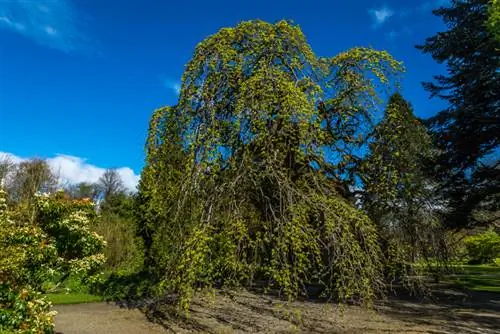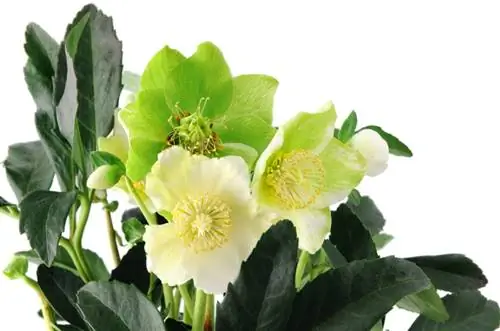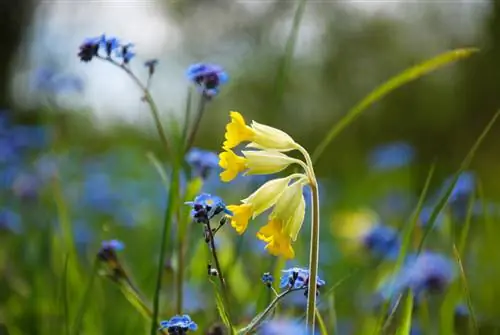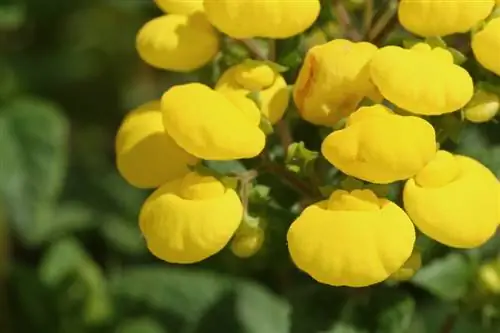- Author admin [email protected].
- Public 2023-12-16 16:46.
- Last modified 2025-01-23 11:20.
With its drooping branches, the hanging elm forms a natural arbor and provides pleasant shade for seating in the garden. Do you still have questions about caring for decorative deciduous trees? Then you will receive precise answers here that will make your gardening work easier.

How do I properly care for a weeping elm?
Caring for a weeping elm includes regular watering in dry conditions, organic fertilization every 4 weeks during the growing season, and optional pruning during the leafless period to control the growth direction and thin out the crown.
How to water a weeping elm?
A hanging elm reacts to drought by indignantly shedding its beautiful leaves. Therefore, do not let the tree thirst. If the soil dries out, please water thoroughly without causing waterlogging. If the tree thrives in the bucket, this may be necessary every day in summer.
Is there a need for regular fertilizer?
A hanging elm responds very well to repeated nutrient supply during the growing season. You can best meet this requirement with organic fertilization every 4 weeks. Work ripe compost (€41.00 on Amazon), bark humus or horn shavings superficially onto the tree disc with a rake and water again. Alternatively, apply a mineral-organic-based complex fertilizer in March and June. From September onwards, fertilization is no longer carried out so that the shoots mature before winter.
Can the weeping elm tolerate pruning?
The weeping elm naturally develops a harmonious habit that does not necessarily require a topiary. In order to direct an ulmus glabra in the desired direction of growth or to keep the circumference under control, there are no concerns about cutting it. Annual thinning is a mandatory part of the care program. How to do it right:
- The best time for shape and maintenance pruning is during the leafless period in late winter
- In the first step, thoroughly remove dead wood from the entire crown
- Then shorten branches that are too long to the desired extent
- Cut or tear off steeply upward wild shoots from the trunk
When making the cut, please make sure to always place the scissors just above a leaf node. In this way you motivate a sleeping eye to sprout quickly. These starting points are visible as slight elevations under the bark.
Tip
Probably the largest elm in Europe could be viewed in Thuringia until 2015. With an age of more than 200 years, the tree towered 30 meters tall over its hometown Grenzhammer in the Ilm district. It wasn't the dreaded elm bark beetle that put an end to the magnificent tree, but a huge thunderstorm in the evening hours of July 22, 2015.






